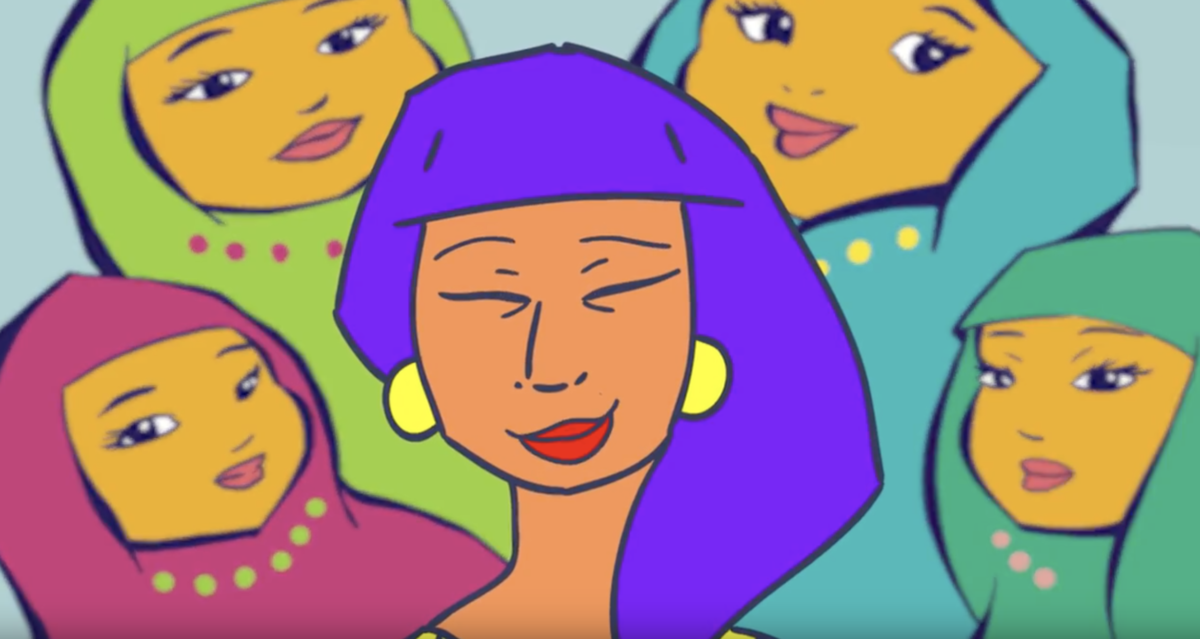Stories have the power to engage, influence, teach, inspire and move people to action. Through stories, we can change hearts and minds. This is why it is so crucial for any organization, especially those attempting to shift the status quo, to build its own culture of storytelling and place it at the core of its communications.
At a recent forum in Atlanta, labor organizer and MacArthur genius grant winner, Ai-Jen Poo, shared that advocates are more “comfortable with using data and analysis to change minds.” When we center data and analysis alone, an essential question is left unanswered: Can true transformation happen without leveraging the power of stories?
Because stories are more commonly accepted as a way to reach hearts and we tend to lean towards data for the brain, in this post we focus on the science behind storytelling and how it can change minds.
Here’s How It Works
There is a consensus present that long PowerPoint presentations are boring. Bullet points may have some interest for the presenter, but they lack the same flair to the people in the audience.
We all experience the world around us through stories, be it consciously or not. In particular, two language processing parts in our brain, the Broca and Wernicke areas, translate the events around us. We create narratives and attach meaning to the events we are exposed to and experience. However, the problem with PowerPoint presentations is that the story we create in our minds may not be the same as the one the speaker intends to convey through hard data.
In an essay, “The Science of Storytelling: What Listening to a Story Does to Our Brains,” entrepreneur Leo Widrich says, “not only are the language processing parts in our brain activated but any other area in our brain that we would use when experiencing the events of the story are, too.” Evolution has hardwired us for storytelling.
When we frame a series of events within a story, the listener’s sensory cortex lights up. Consider this narrative about the death of Michael Brown:
In the city of Ferguson, Missouri, Michael Brown Jr., an unarmed African American young man, is fatally shot by a white police officer, Darren Wilson. His devastating and unjust murder catalyzes action locally and nationally as people take to the streets chanting “Black Lives Matter.”
When woven into a story, action statements like “Power to the People” and “Black Lives Matter,” can activate the motor cortex part of the brain. The use of these action statements can then inspire and elicit action. Listeners can experience and better relate to what the speaker intends. In other words, stories have the power to transpose listeners into the action, itself, making them more inclined to sign a petition, attend a rally, take part in a boycott, or contact their political representatives.
Citing Uri Hasson, a Princeton neuroscientist, Leo Widrich went on to say that “a story is the only way to activate parts in the brain so that a listener turns the story into their idea and experience.”
In her book, Wired for Story: The Writer’s Guide to Using Brain Science to Hook Readers from the Very First Sentence, Lisa Cron says that, “stories allow us to simulate intense experiences without having to live through them. Stories allow us to experience the world before we have to experience it.”
The Chemistry of Storytelling
Scientists have also come to realize that stories have the power to release certain chemicals in the brain. These include things like cortisol, dopamine, and oxytocin, and each has a specific use. Cortisol helps the brain form new memories; dopamine regulates our emotional responses and keeps us engaged, while oxytocin helps us develop deeper connections by instilling a sense of empathy within us.
Why Does This Matter?
All of the scientific facts presented above are central to giving stories sense and meaning. It is through these stories that our brains can examine truths and beliefs, and how they can differ from one person to the next. We continually challenge our understanding of the world and expand our overview by experiencing it through the eyes of others. We can cultivate a vision for social change and personal transformation, and align our actions to realize our collective vision. Data and analysis satisfy the brain’s need for logic and reason, while stories support us to make meaning and find deeper connection. At the end of the day, we need both to shift hearts and minds and move people to action.
When we use stories in our endeavor to shift the status quo and create change, they can also lead to growth, learning, and transformation. Stories are an efficient way to convey messages and catalyze change, but true storytelling is about sharing ideas as the brain understands them best.
If you want to learn more about the power of storytelling, and our model of Transformational Storytelling, feel free to follow us on Facebook, Twitter, Instagram, and LinkedIn.

